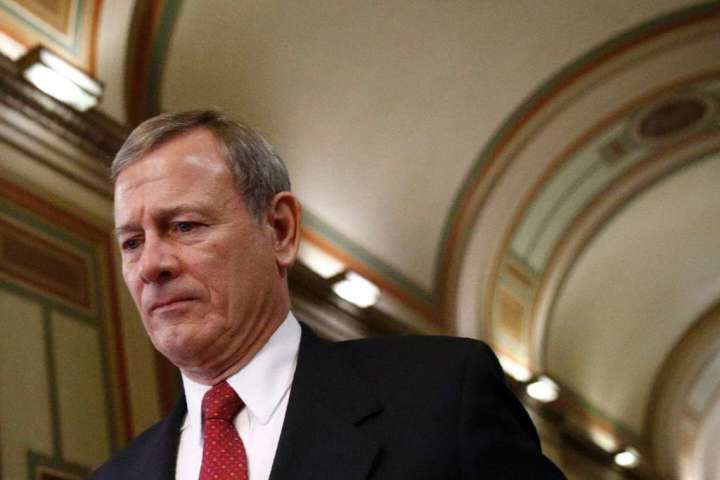My first stop, once the Supreme Court’s abortion decision was released, was the concurrence by Chief Justice John G. Roberts Jr. The majority opinion by Justice Samuel A. Alito Jr. had leaked earlier — no mystery there. And the joint dissent, by the court’s three liberal justices, was hardly a surprise.
Why John Roberts’s wise prudence was the wrong answer on abortion law

Roe v. Wade and Planned Parenthood of Southeastern Pennsylvania v. Casey, the 1992 decision reaffirming the constitutional right to abortion, were never persuasive and always controversial. They deserve to be consigned to the dustbin of discarded cases, along with Dred Scott, Plessy v. Ferguson and Korematsu, the decision upholding the World War II internment of Japanese Americans.
The chief knows this, I believe, but what would he say in this case?
Roberts is a brilliant and prudent jurist, ideally suited for his role. There are two crucial markers on his tenure. The first is his 2010 concurrence in Citizens United v. Federal Election Commission, in which he delineated an analysis of when stare decisis binds and when it does not.
The second is his 2012 ruling upholding Obamacare while also striking down the statute’s faux claims to be regulating interstate commerce and its abuse of the Constitution’s “spending clause.” The Affordable Care Act had passed with supermajority support and was the signature legislative achievement of the nation’s first African American president. Roberts looked for any conceivable argument for upholding such a milestone and found a tenuous hook on which to hang the 5-to-4 majority opinion: the taxing power given to Congress.
Roberts’s concurrence in the abortion case, Dobbs v. Jackson Women’s Health Organization, on Friday was an appeal for prudence and another invocation of the tradition that court doesn’t decide more than it is obliged to, especially, again, when it comes to constitutional issues. Roberts’s approach is appropriate, nine times out of 10. But on Friday the court wasn’t reviewing a statute. It was considering the mess it had made of abortion law over half a century. Legislatures at the state level were demanding deference.
In Dobbs the majority correctly thought it was both prudent and necessary to reach the underlying holdings in Roe/Casey. Alito used the Roberts framework from Citizen United in explaining why Roe/Casey had to go — now, before it did even more damage to our Constitution and our politics.
In a concurring opinion, Justice Brett M. Kavanaugh explained the urgency of overruling Roe “at this time”: because it “has caused significant negative jurisprudential or real-world consequences.” It was time, Kavanaugh concluded, to exit the doomed attempt to dictate a national consensus on a divisive issue the court could never settle. Note that nothing changed in the liberal states on Friday. The abortion law regimes in New York and Massachusetts on the East Coast, in Illinois in the center of the country and all states along the West Coast are the same today as they were Thursday. States hamstrung by the overreach of the dogmatic abortion-on-demand ideologues and unable to protect the lives of unborn children did see their legal regimes change. More changes — in both directions — are coming.
Now all the states — and Congress as well, if it can muster the will and working from an enumerated power — can legislate on the complex subject of when abortion ought to be available to pregnant women. We are back to where we were in 1973. Good. Finally.
“Trust the people,” Winston Churchill would proclaim. The Supreme Court on Friday declared that — on abortion — we will. States have and will continue to legislate on abortion. Congress may even, down the road, preempt those laws — as is its constitutional right.
We don’t “trust the people” on freedom of the press, the free exercise of religion, the right of the accused, the ability to keep and bear arms. Those rights are clearly enumerated in the written Constitution. They are set down in writing in the Constitution to stand against the demands of transient majorities. (Indeed, Casey itself was modified for seven years by a transient liberal majority favoring the availability of “late term” abortion procedures; Justice Anthony M. Kennedy quickly acted to reverse that move when he had the votes.)
No written, explicit protection for abortion rights exists in the Constitution; nor did the court simply anticipate where state legislatures were headed, as it did in the Griswold case striking down state barriers to contraception or in Obergefell, which established the right to same-sex marriage. Nothing remotely approaching consensus developed on abortion because of the fierce, continuing debate about the status of the fetus/unborn child. This freighted argument must be settled, if ever, by elected representatives accountable to voters. The chief justice surely knew this, but he wanted to move slowly toward the declaration that Roe and Casey had never been sound. Five colleagues rejected that gradual path — and for an overwhelmingly persuasive reason. “Roe and Casey have led to the distortion of many important but unrelated legal doctrines,” Alito declared, “and that effect provides further support for overruling those decisions.” The five decided they could not wait for the additional cases that would surely come. They were right.
Since 1973, it has always been that the law of abortion and all its attendant controversies have been whatever five or more unelected justices of the Supreme Court have said it was. Now it shall be what the states or Congress say it is, via the votes of citizens on state initiatives or of state or federal legislators, not orders from on high.






